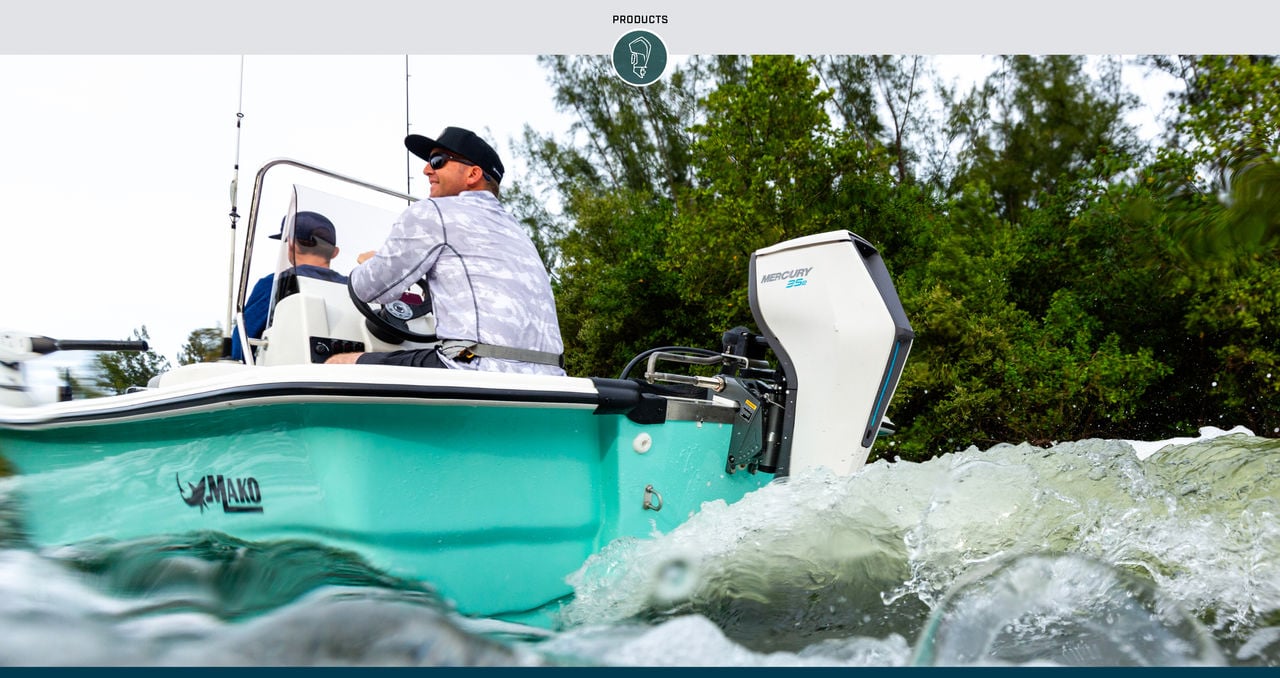Whether you’re an experienced boater or considering purchasing your first boat, a Mercury Avator® electric outboard is a great option to get you out on the water. Avator outboards are easy to use, efficient and designed to deliver years of fun and adventure.
But what about power? How do electric outboards stack up against modern internal combustion engines? And can an electric outboard deliver the power you need for your boating adventures?
Here’s what you should know:
Low-Voltage Electric Outboard Primary Applications
First things first, it's important to understand the basic applications for low-voltage electric outboards.
Consider the Avator lineup. It currently includes the Avator 7.5e, 20e and 35e models, with the 75e and 110e outboards coming soon. These are all low-voltage outboards intended to power boats at low speeds.
The 7.5e and 20e require only one battery, giving them the most portability. This makes them great options for powering small jon boats, inflatables, aluminum V-hulls and rotomolded boats such as the Veer™ V13.
The 35e requires multiple batteries (the 20e can be rigged this way too), as will the 75e and 110e models once they’re available. Thus, they require that an Avator Power Center be permanently installed in the boat for distributing battery power. With the extra battery capacity (and the additional power of the 75e and 110e), they’re capable of powering a wider range of boats, including jon boats, V-hulls, inflatables, fiberglass micro-skiffs and pontoons.
Learn more about their applications here Get To Know The Avator Electric Outboard Family
If you want to truly understand electric outboard performance, boat type is not the only important factor to consider.
Electric vs. Gas: Torque Makes the Difference
Electric outboards perform differently than gas outboards. It starts with the motor technology.
Mercury uses transverse flux electric motors in its low-voltage Avator outboards. While they might sound as though they’re out of a sci-fi movie, transverse flux motors are definitely real – and they’re premium technology. They offer the best combination of weight, power and efficiency for low-voltage marine applications.
From a performance standpoint, electric outboard motors – transverse flux motors, in particular – also spool up serious torque. When you hit the throttle, you feel that torque drop instantly. Mercury engineers tuned up the motor technology even more with what we call Boost Mode. It’s an additional boost of torque during initial acceleration that increases hole shot performance.
As a result, most Avator electric outboards can accelerate at a faster rate than gas outboards with equivalent power ratings.
So how much power and what kind of performance can you expect?
Let’s consider an example.
Avator Electric Outboard Power Ratings
The Avator 7.5e outboard is rated to generate 750W of power at the prop shaft, which mathematically equals 1hp. However, because of the torque advantage of electric motors, the Avator 7.5e can accelerate a Veer V13 boat at a similar rate as a 3.5hp four-stroke internal combustion outboard.
Like with any outboard, the exact performance you’ll experience will vary based on wind and water conditions, the boat’s hull design and the boat’s load. Battery state of charge can also impact results.
Here’s how the outboards in the current Avator lineup stack up against some of our small portable gas outboards, based on internal testing:
Outboard Power Rating Battery Setup Boat Used in Test BoatWeight Comparable Acceleration
Avator 7.5e 750W One 1 kWh 13-foot Veer™ V13 382 pounds 3.5hp four-stroke
Avator 20e 2,200W Two 2300Wh 12-foot Lund® WC-12 770 pounds 5hp four-stroke
Avator 35e 3,700W Two 2300Wh 12-foot Lund® WC-12 770 pounds 9.9hp four-stroke
Performance Data You Can Trust
At Mercury, we’ve been testing marine motors for more than 85 years. We’re meticulous in our process and have a team of experts that spends countless hours on the water validating product performance.
We do it because we want to ensure your boating experience is the best it can be. We also want you to understand the performance you can expect.
That’s also why we rate our electric outboards based on output power at the prop shaft. This is the actual amount of power you get from the motor to turn the prop and propel the boat. Some competitor brands rate their outboards based on input power. In that situation, the actual output power you get is less due to the inherent inefficiencies of electric motors. Some other models are rated using commercial shipping performance indicators that don’t apply to typical recreational boaters.
Likewise, we don’t use terms like “horsepower equivalency.” For transparency, we share the actual power rating and offer performance comparisons based on our testing. We also provide background info on our test scenarios, including the boat type, outboard and battery setup used.
These are just a few more ways we help boaters confidently make the right choice when they’re deciding which outboard to put on the back of their boat.
Learn more about the Avator outboard family.
All trademarks are the property of their respective owners.



